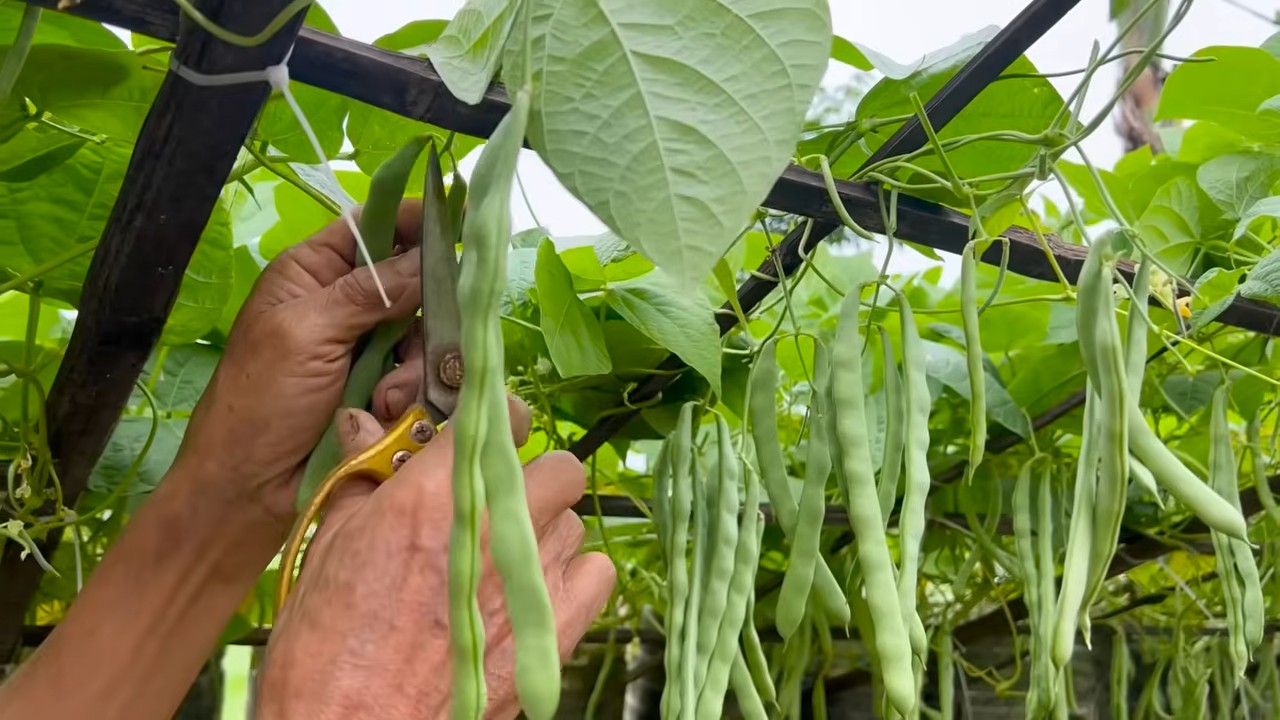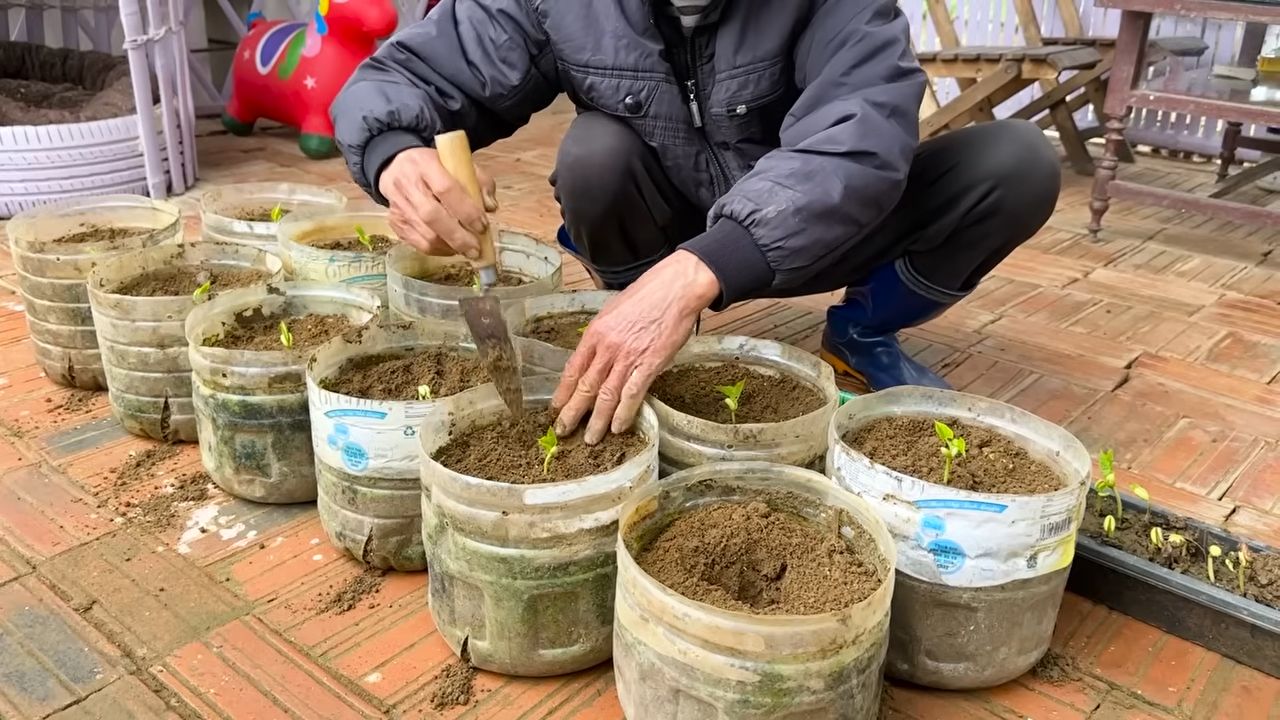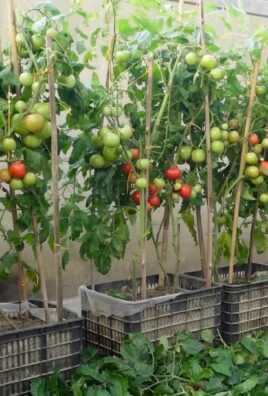Growing bean plants successfully can feel like a real victory in the home garden! Imagine plucking fresh, crisp beans straight from your own backyard, knowing you nurtured them from tiny seeds to bountiful producers. It’s a truly rewarding experience, and I’m here to tell you, it’s more achievable than you might think!
Beans have a rich history, dating back thousands of years and playing a vital role in diets across the globe. From ancient civilizations in the Americas to traditional European cuisines, beans have been a staple food, prized for their nutritional value and versatility. They’re not just delicious; they’re packed with protein, fiber, and essential vitamins and minerals.
But let’s be honest, sometimes growing bean plants successfully can be a little tricky. Pests, diseases, and unpredictable weather can all throw a wrench in your plans. That’s where these DIY tricks and hacks come in! I’m going to share some simple, yet effective strategies that will help you overcome common challenges and maximize your bean harvest. Whether you’re a seasoned gardener or just starting out, these tips will empower you to cultivate thriving bean plants and enjoy a delicious, homegrown bounty. So, grab your gardening gloves, and let’s get started!

Growing Beans: Your DIY Guide for a Bountiful Harvest
Hey garden friends! I love harvesting fresh beans straight from the garden. The taste is simply unbeatable! And the best part? Growing beans is not as hard as you might think. With this guide, I’ll show you how to successfully plant beans and bring in a rich harvest. Let’s get started!
Preparation: The Key to Success
Before we start planting, good preparation is everything. Here are the most important points you should consider:
- Choosing the right variety: There are countless bean varieties, from bush beans to pole beans. Think about which variety best suits your garden and your preferences. Bush beans are more compact and don’t need a trellis, while pole beans require more space but also yield more. Inform yourself about the characteristics of the different varieties before you decide.
- The perfect location: Beans love the sun! Choose a sunny spot in your garden where the plants get at least six hours of direct sunlight per day. Also, make sure the soil is well-draining to prevent waterlogging.
- Preparing the soil: Beans are not particularly demanding, but well-prepared soil is still important. Loosen the soil thoroughly and remove weeds. You can also work in compost or organic fertilizer to enrich the soil with nutrients.
- Choosing the right time: Beans are sensitive to frost, so you should sow them only after the last frosts. The soil temperature should be at least 10 degrees Celsius. This is usually the case from mid-May onwards. You can also start the beans indoors to speed up the harvest.
Sowing: How to Get the Beans in the Ground
Now let’s get down to it! Sowing is an important step that determines success or failure. Here are the steps you should follow:
- Prepare the soil: Loosen the soil again and draw shallow furrows. The distance between the furrows should be between 40 and 60 centimeters, depending on the variety.
- Place the seeds: Place the bean seeds in the furrows. The distance between the seeds should be about 5 to 10 centimeters for bush beans, and about 10 to 15 centimeters for pole beans.
- Cover with soil: Cover the seeds with about 2 to 3 centimeters of soil. Press the soil down lightly.
- Water: Water the soil carefully so the seeds are not washed away. Make sure the soil is moist, but not wet.
- Be patient: Now it’s time to wait! Germination takes about 1 to 2 weeks, depending on the temperature and variety. Keep the soil moist during this time.
Care: Keeping Your Beans Healthy and Strong
After sowing, proper care is crucial for your beans to grow healthy and strong. Here are the most important care measures:
- Watering: Beans need regular water, especially during flowering and fruit formation. It’s best to water in the morning or evening so the water doesn’t evaporate as quickly. Avoid waterlogging, as this can lead to root rot.
- Weeding: Remove weeds regularly so the beans don’t have to compete for nutrients and water.
- Fertilizing: Beans are not particularly demanding, but additional fertilization can increase the yield. It’s best to use organic fertilizer like compost or horn shavings.
- Provide support (for pole beans): Pole beans need a trellis to climb on. You can use a trellis, a fence, or just sticks. Make sure the support is stable and provides the plants with enough hold.
- Controlling pests and diseases: Beans can be affected by various pests and diseases. Watch for signs like aphids, bean flies, or fungal infections. If necessary, you can use organic pesticides.
Harvest: The Reward for Your Work
Finally, the time has come! The harvest is the highlight of bean cultivation. Here are the most important points to consider:
- Choosing the right time: Beans are ready for harvest when the pods are plump and break easily. The seeds should not be too large yet.
- Harvest gently: Pick the beans carefully so you don’t damage the plants.
- Harvest regularly: Harvest the beans regularly so the plants continue to form new pods.
- Storage: Fresh beans are best when you process them immediately. However, you can also store them in the refrigerator for a few days. To freeze them, blanch the beans briefly and then freeze them.
Special Tips for Pole Beans
Pole beans are a bit more demanding than bush beans, but the higher yield is worth it. Here are a few special tips for growing pole beans:
- Sturdy support: Pole beans grow very tall, so a sturdy trellis is essential. Make sure the support provides the plants with enough hold and doesn’t tip over.
- Regular watering: Pole beans need a lot of water because they have a large leaf mass. Water them regularly, especially during flowering and fruit formation.
- Pruning: Regularly remove side shoots so the plants can put their energy into forming pods.
Special Tips for Bush Beans
Bush beans are ideal for smaller gardens or for beginners. Here are a few special tips for growing bush beans:
- Direct sowing: Bush beans can be sown directly into the open ground. Starting them indoors is not necessary.
- Multiple sowings: To ensure a continuous harvest, you can sow bush beans every few weeks.
- Less care: Bush beans are easier to care for than pole beans. They don’t need a trellis and require less water.
Common Problems and Solutions
Problems can also arise when growing beans. Here are a few common problems and solutions:
- Poor germination: If the beans do not germinate, there can be various reasons. The soil may be too cold or too dry. Make sure the soil temperature is at least 10 degrees Celsius and the soil is moist.
- Aphids: Aphids can weaken the plants and reduce the yield. You can spray them off with a jet of water or use organic pesticides.
- Bean flies: Bean flies lay their eggs in the soil and the larvae feed on the roots. You can cover the soil with a fleece to prevent egg-laying.
- Fungal infections: Fungal infections can lead to leaf spots or rot. Ensure good ventilation and avoid waterlogging. If necessary, you can use fungicides.
Conclusion
With this guide, you are well-equipped to successfully grow beans. Remember that patience and proper care are the keys to success. I wish you lots of fun gardening and a bountiful harvest! And don’t forget: homegrown beans simply taste the best!
I hope this article helps you grow your own beans. Good luck

Conclusion
So, there you have it! Growing bean plants successfully doesn’t have to be a daunting task reserved for seasoned gardeners. With a few simple tricks and a little bit of patience, you can cultivate a thriving bean patch right in your own backyard, or even on your balcony. We’ve explored the essential steps, from selecting the right bean variety and preparing the soil to providing adequate support and warding off common pests. But the real magic lies in the DIY trick we’ve highlighted: the homemade bean teepee.
Why is this a must-try? Because it’s more than just a support structure; it’s a mini-ecosystem that fosters healthy growth. The teepee design maximizes sunlight exposure, promotes air circulation, and provides a natural climbing frame that bean plants adore. Plus, it’s a beautiful and functional addition to any garden space, adding a touch of rustic charm.
But don’t stop there! Feel free to experiment with variations on the teepee design. Instead of bamboo poles, consider using sturdy branches from your yard or repurposed metal pipes. You can also personalize your teepee by adding decorative elements like colorful ribbons, wind chimes, or even small birdhouses. For bush bean varieties, consider creating raised beds or using large containers filled with well-draining soil. Companion planting is another fantastic way to boost your bean crop. Marigolds, for example, are known to deter bean beetles, while nasturtiums attract aphids away from your precious bean plants.
Remember, growing bean plants successfully is a journey of learning and discovery. Don’t be afraid to make mistakes and adapt your approach as needed. The most important thing is to get your hands dirty, connect with nature, and enjoy the process.
We’re confident that with these tips and tricks, you’ll be harvesting a bountiful crop of delicious, homegrown beans in no time. Now, it’s your turn! We encourage you to try this DIY bean teepee and share your experience with us. Post photos of your bean plants, tell us about your successes (and challenges!), and let us know what variations you’ve tried. Together, we can create a community of bean-growing enthusiasts and inspire others to embrace the joys of gardening. Happy growing!
Frequently Asked Questions (FAQ)
What are the best bean varieties to grow for beginners?
For beginners, bush bean varieties like ‘Bush Blue Lake’ or ‘Contender’ are excellent choices. They are compact, easy to manage, and produce a good yield. Pole bean varieties like ‘Kentucky Wonder’ or ‘Scarlet Runner’ are also relatively easy to grow, but they require a trellis or teepee for support. Consider your local climate and growing season when selecting bean varieties. Your local nursery can provide recommendations for varieties that thrive in your area.
How often should I water my bean plants?
Bean plants need consistent moisture, especially during flowering and pod development. Water deeply whenever the top inch of soil feels dry to the touch. Avoid overwatering, as this can lead to root rot. A good rule of thumb is to water 2-3 times per week, depending on the weather conditions. Mulching around the base of the plants can help retain moisture and suppress weeds.
What are some common pests that affect bean plants, and how can I control them?
Common pests include bean beetles, aphids, and spider mites. Bean beetles can be handpicked off the plants or controlled with insecticidal soap. Aphids can be washed off with a strong stream of water or treated with neem oil. Spider mites thrive in dry conditions, so increasing humidity around the plants can help deter them. Companion planting with marigolds or nasturtiums can also help repel pests. Regularly inspect your plants for signs of infestation and take action promptly.
How do I know when my beans are ready to harvest?
The harvesting time depends on the bean variety. For snap beans, harvest when the pods are firm, plump, and snap easily when bent. For dry beans, allow the pods to dry completely on the plant before harvesting. The pods should be brittle and the beans inside should be hard and dry. Shelling beans are harvested when the pods are full and the beans are plump but not yet dry.
Can I grow bean plants in containers?
Yes, you can grow bean plants in containers, especially bush bean varieties. Choose a large container with good drainage and fill it with a well-draining potting mix. Provide adequate support for pole bean varieties if you are growing them in containers. Ensure the plants receive at least 6-8 hours of sunlight per day. Water regularly and fertilize every few weeks with a balanced fertilizer.
What kind of soil is best for growing bean plants?
Bean plants prefer well-draining soil that is rich in organic matter. Amend the soil with compost or aged manure before planting. The ideal soil pH is between 6.0 and 7.0. Avoid heavy clay soils, as they can retain too much moisture and lead to root rot. If you have clay soil, amend it with sand and organic matter to improve drainage.
How much sunlight do bean plants need?
Bean plants need at least 6-8 hours of sunlight per day. Choose a sunny location for your bean patch. If you are growing bean plants indoors, provide supplemental lighting if necessary. Insufficient sunlight can lead to leggy growth and reduced yields.
Is it necessary to fertilize bean plants?
While bean plants can fix nitrogen from the air, they still benefit from fertilization. Use a balanced fertilizer or a fertilizer specifically formulated for beans. Avoid over-fertilizing, as this can lead to excessive foliage growth and reduced pod production. Fertilize at planting time and again when the plants begin to flower.
How can I prevent diseases in my bean plants?
To prevent diseases, choose disease-resistant bean varieties. Provide good air circulation around the plants by spacing them properly. Avoid overhead watering, as this can promote fungal diseases. Remove any diseased leaves or plants promptly. Rotate your crops each year to prevent soilborne diseases from building up.
Can I save seeds from my bean plants for next year?
Yes, you can save seeds from your bean plants, but only from open-pollinated varieties. Hybrid varieties will not produce true-to-type seeds. Allow the pods to dry completely on the plant before harvesting the seeds. Store the seeds in a cool, dry place in an airtight container. Label the container with the bean variety and the date of harvest.




Leave a Comment